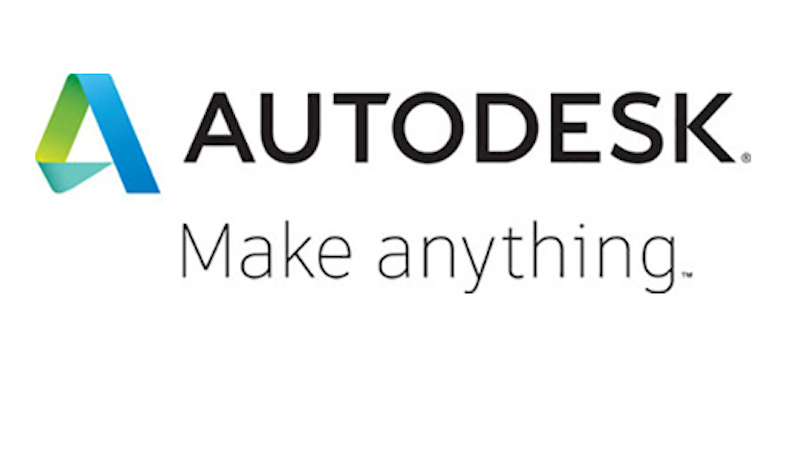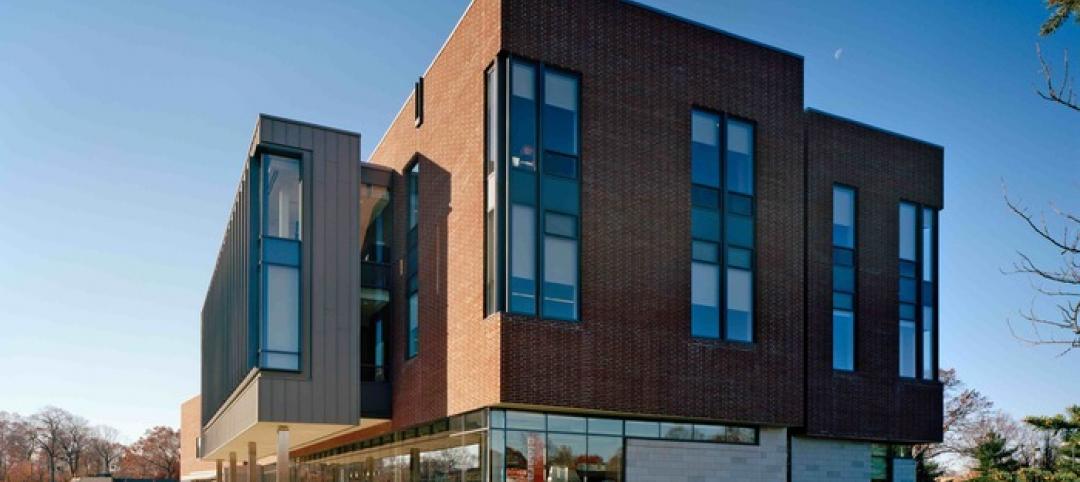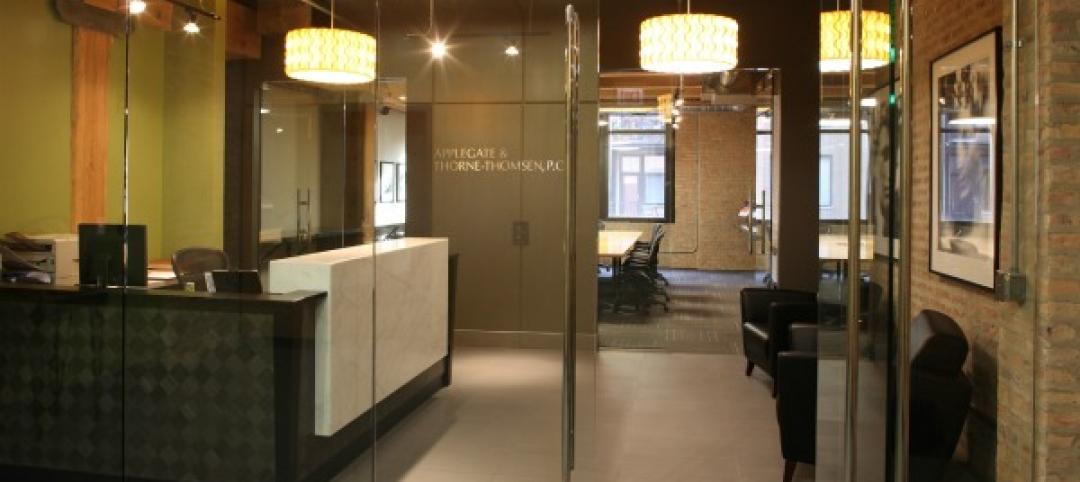Autodesk, Inc. (NASDAQ: ADSK) today released the "Construction Outlook 2021: Risks & Opportunities" report, a new study that dives into macro industry trends across five areas including growth, health and construction safety, labor, supply chain and design. As the compounding effects of the global pandemic and resulting economic instability begin to surface, aggregated and anonymized product data from BuildingConnected, a preconstruction solution within Autodesk Construction Cloud, finds that real-time bidding activity has surpassed pre-pandemic levels and reached an all-time high in January 2021.
More than one million owners, general contractors, construction managers and subcontractors use BuildingConnected to answer or request bids. More than five million bid invites are sent out every month on the platform.
Additional key insights detailed in the report derived from aggregated and anonymized BuildingConnected bidding activity, as of March 1, 2021, include:
— While bidding activity was initially on the rise at the beginning of 2020, it dropped roughly 34 percent in the 60 days following March 19 2020, when the first U.S. stay-at-home orders were mandated.
— Bidding activity slowly began to recover between March and October and hit a high for 2020 in November.
— Compared to a three-month pre-pandemic average, total bidding activity was up 15 percent in November and 36 percent in January 2021, with January volume representing an all-time high on the BuildingConnected platform.
— The rate of new projects being added to the platform throughout the past year has remained constant, indicating increased bidding activity may be related to project re-starts, not net-new projects.
"While it's not an indication that we're entirely out of the woods, the real-time bidding data from BuildingConnected suggests that delayed or rescheduled projects may be coming back online," said construction economist Ed Zarenski. "Increased levels of bidding activity, paired with the data that project volume has remained consistent, signals the industry is getting back to work – and doing so quickly."
The 2021 Construction Outlook Report provides insights into construction industry trends in spending, project starts and more
Using internal product data, external sources and industry economists, the Construction Outlook report provides construction professionals with critical information, analysis and actionable insights to stay resilient as the industry begins its journey to recovery. Additional key findings from the report include:
— New starts are up in 2021 but starting backlog in 2022 could slide: While new starts in 2021 are forecast to increase six percent – with a six percent increase in nonresidential projects and a 10 percent increase in non-building infrastructure projects, the starting backlog forecast for 2022 is projected to decrease five percent.
— Nonresidential construction spending will drop in 2021, yet healthcare and commercial retail are projected to rebound in 2022. By October 2021, nonresidential building spending is projected to decrease 20 percent from February 2020, with projected drops of two to three percent each quarter. Nonresidential spend across the board is forecast to hit $411 billion in 2021. In 2022, the healthcare and commercial / retail sectors are expected to grow by three percent and six percent, respectively.
— Transportation, air and rail sectors have been less impacted: Transportation spending is forecasted to grow 10 percent in 2021, due in part to strength in backlog from several multi-billion dollar starts over the past few years. There could also be longer-term positive impacts as the new administration has announced its focus and dedication to the health and resilience of the national transportation system.
— Additional gains will be made in other areas of nonbuilding infrastructure: Forecasted for 2021, certain segments of nonbuilding infrastructure will also see an increase in spend including sewer and water (four percent) and highways and bridges (two percent).
— Total public spending in 2021 is projected to finish at $384 billion, an eight and a half percent increase from 2020. Growth in the residential sector heavily contributes to the gains expected in total spending in 2021. Starting backlog growth is also expected to pick up in 2022, particularly for the commercial, healthcare and transportation sectors.
"In the early days of the pandemic, the construction industry turned to technology to readjust as we facilitated social distancing, implemented jobsite safety guidelines and moved our offices into our homes," Jim Lynch, senior vice president and general manager, Autodesk Construction Solutions. "Now that the industry looks to be picking up and teams are headed back to the jobsite, adopting technology, digitizing workflows and upskilling employees is more important than ever to handle the increased workload. For instance, despite a 40 percent spike in bidding volume, we're seeing that almost 80 percent of teams using BuildingConnected are still able to turn around bids in the industry-standard of seven days. Managing this increase in output with no significant dip in productivity simply would not be possible without the right technology."
Recommendations for improving preconstruction processes and mitigating risk
The report also provides recommendations for companies to help navigate the current industry climate, including:
1. Monitor the burden of project restarts: Defaults tend to rise when the construction industry moves from a period of reduced activity to a period of growth. Moving forward, specialty contractors will need to be tactful in selecting projects, and owners and general contractors will need to evaluate the health of trade partners taking on new work.
2. Qualify trade partners often: The construction market is volatile right now, and traditional annual qualification schedules may need to be conducted more frequently – ideally twice per year.
3. Coordinate the design review process: Reducing change
"As projects quickly begin coming back online, deadlines will be more stringent and every dollar will be scrutinized," said Zac Hays, head of preconstruction, Autodesk Construction Solutions. "The preconstruction process will play an increasingly vital role in mitigating risks, generating and managing critical data and reducing costly rework – which will better position companies to navigate this period of uncertainty with more precision."
The report also offers case studies from Autodesk customers including Chandos, Helm Mechanical, John Moriarty & Associates, EBC, Inc. and CRB. To read the full report, click here.
Related Stories
| Jan 27, 2012
BRB Architects designs new campus center for Molloy College
Intended to be the centerpiece of the College’s transformation from a commuter college to a 24-hour learning community, the “Public Square” will support student life with spaces such as a café, lounges, study rooms, student club space, a bookstore and an art gallery.
| Jan 27, 2012
Columbia University’s New Core Laboratory aims for LEED Silver
Construction manager Sordoni Construction Co. along with the design team of Payette Architects and Vanderweil Engineers will provide design and construction services to renovate the majority of the existing Core Lab building to create the new Lamont Center for Bio-Geochemistry.
| Jan 26, 2012
World of Concrete 2012: A tinge of optimism
Cement consumption is expected to increase significantly in 2013, the first time an increase has been predicted in the past five years.
| Jan 26, 2012
Three dead, 16 missing in Rio buildings collapse
The buildings, one 20 floors high, collapsed on Wednesday night in a cloud of dust and smoke just one block away from the city's historic Municipal Theater.
| Jan 26, 2012
Siemens launches smoke detection knowledge center
New knowledge center web site demonstrates efficacy of smoke detection.
| Jan 26, 2012
HOK partners with USGBC on design of Haiti children's center
Passive design principles give form to a sustainable, restorative environment for the children of Haiti.
| Jan 26, 2012
American Standard names Gould as president and CEO
Gould succeeds Don Devine, who led the successful turnaround of American Standard Brands.
| Jan 26, 2012
Summit Design+Build completes law office in Chicago
Applegate & Thorne-Thomsen's new office suite features private offices, open office area, conference rooms, reception area, exposed wood beams and columns, and exposed brick.
| Jan 24, 2012
New iPad app ready for prime time
Siemens’ versatile application connects users to APOGEE BAS control and monitoring functions via wireless network connectivity. The application directly interacts with BACnet/IP and Siemens APOGEE P2 field panels.
| Jan 24, 2012
Vyhanek joins Thornton Tomasetti’s Kansas City office
Vyhanek will assemble a new MEP team in the Midwest to support Building Performance and Property Loss Consulting practices.

















